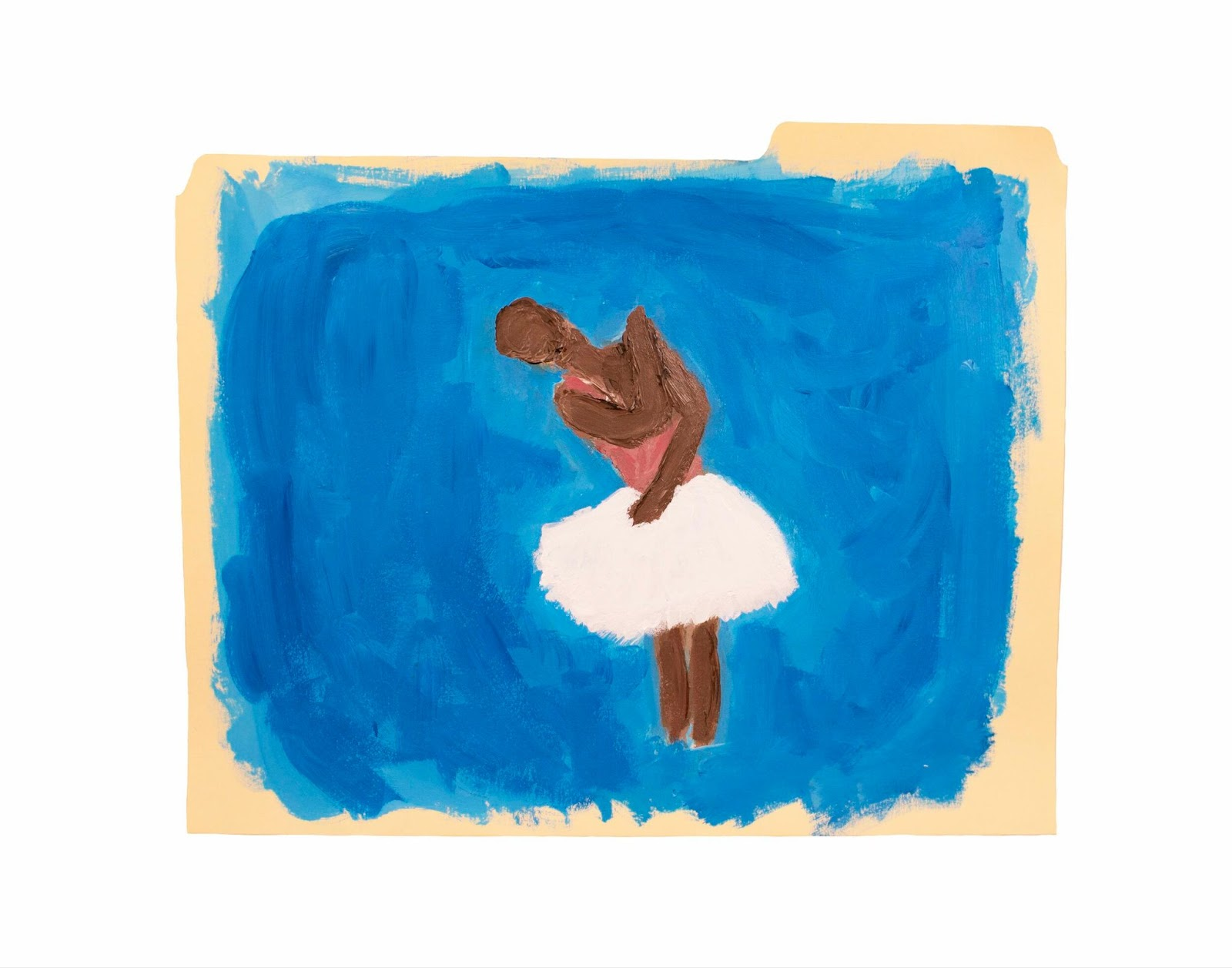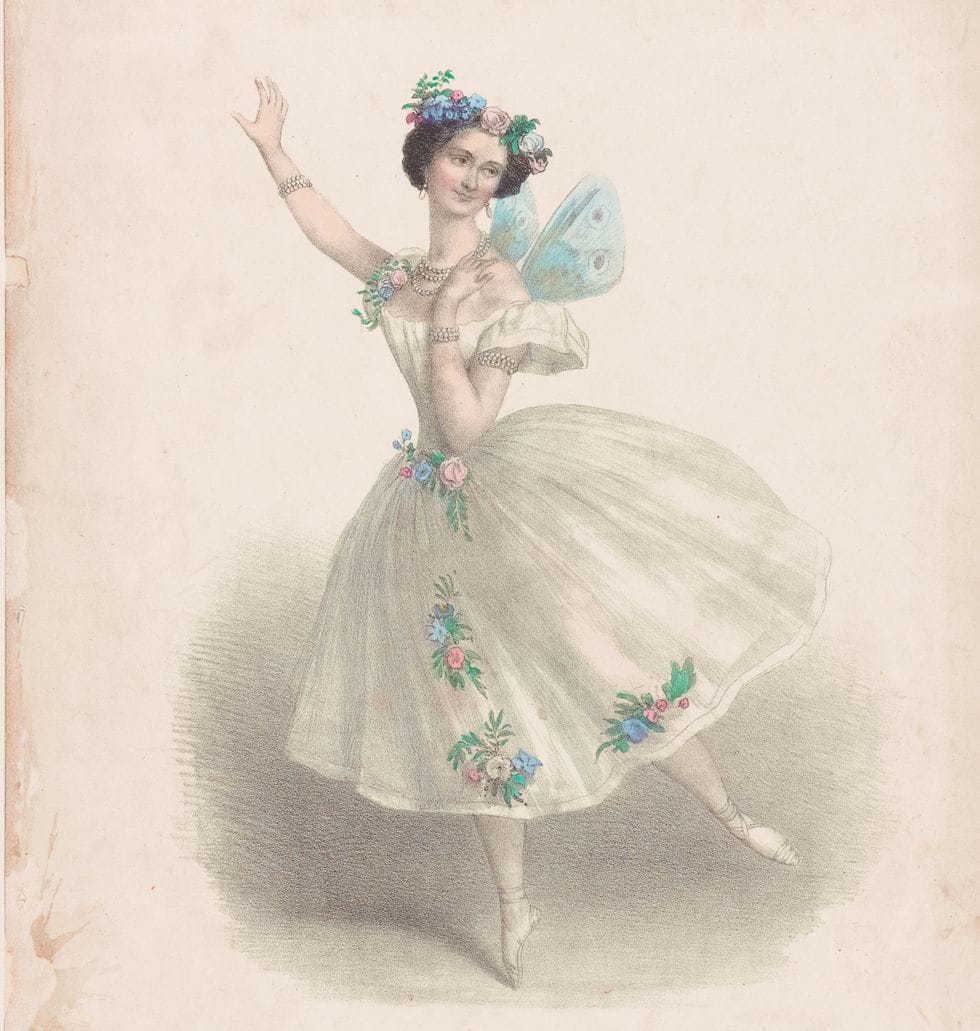Why you should care about the color of ballet shoes.
Spoiler: This isn't just about the color of ballet shoes

Some of the feedback I've received over the past month has been along the lines of people telling me that they thought certain pieces would be boring or irrelevant, and somehow how I was able to write thousands of words about them.
The main point of this week's newsletter is one of those topics that I've never really had to consider. It focuses on emoji, ballet shoes (which I have never worn), and makeup (which I don't use).
You may not care about dance, pop culture references, or linguistic analysis. I'm sure that you didn't really care about carrots or bananas either. This goes deeper than the color of an emoji.
During the second half of the 2010s, there were three distinct but related color advances that happened. One of them was even hailed as one of "Time Magazine's 25 inventions of the year".
Two out of three of those color advances were more than a century too late.
Five Shades of Emoji
The first was that Apple released a new Emoji feature that would allow the user to choose the shade of skin tone they would like to use, instead of the yellow default. There were 5 shades, not exactly being a precise tone for anyone, but it was a step for personalization. No matter what your skin tone is, you could choose a tone a lot closer than a bold yellow.
Ballet Shoes
The second advance, which you would not know about unless you are into ballet, is that a company designed a pointe ballet shoe in many different shades of skin tones, not just the "traditional" light pink.
As the shoe is intended to be an extension of the foot, it was designed to mimic the color of skin. These shoes become extremely personalized for each ballerina, with them cutting things and adding things to make it more comfortable for them.
Within a few years there was a second company selling shoes in many skin tones, and by 2020, six major manufacturers pledged to sell the shoes in many shades.
Rihanna
The third advance, the one that Time Magazine hailed, was that when the [former?] Barbadian ambassador, 9-time Grammy-winning singer and songwriter, and Ocean's 8 actress Rihanna released her Fenty Beauty line in 2017, she did so by releasing her foundation in 40 different shades so everyone could find a shade that was closest to their own.
Other major manufacturers began to follow. And then Rihanna released an additional 10 shades to ensure that someone could find the perfect one for themselves.
In a similar fashion, when Rihanna released her Savage X Fenty lingerie and sleepwear brand, she did so by releasing inclusive sizes for people of all shapes and sizes. Not one to rest on her laurels, she didn't only find models for her shows and catalogues that also featured people of all colors, shapes and sizes, she created a feature that would allow you to choose what size model you wanted to see, so you could get an estimation how it would look on you.
Were there small specialty brands which sold darker shades of makeup and larger sizes? Sure. But Fenty Beauty was the first large brand to launch with coloring and sizing for everyone. And they sold out within a month. The fear of competition pushed the competitors to begin to follow suit.
One of the things that Fenty Beauty did, which apparently allowed the company to be a lot more agile, is keeping their manufacturing facilities in San Francisco, and shipping worldwide from there.
I admittedly had wanted to research/write about Fenty Beauty since I began writing this newsletter, because I am curious in identifying what the optimal amount of color choices a company should offer a product in, but that is not the topic of this particular email.
Getting to the pointe
What prompted me to write this email was an Instagram post from the first Black woman promoted to principal dancer of the American Ballet Theatre (ABT), Misty Copeland, of whom I've been a fan for years, both as a dancer and as a human being.
As an aside, one of my "isolation folders" during COVID was titled "Broken Heart (in a white tutu)" and while I didn't mention it then, it was based on a picture of Misty Copeland. (I didn't paint faces at all, besides Albert Einstein.)

For the past six months, she has been on a campaign to create a version of the ballet shoe emoji in the same variety of shades as the praying hands. It makes absolutely no sense that it is taking this long.
In September, NBC News reported on her petition to Apple and the Unicode Consortium:
“In an era where Apple showcases diversity across its emoji spectrum, why is the pointe shoe left behind?” Copeland wrote in the petition, which had just more than 7,700 signatures Friday.
“This petition isn’t just about an emoji. It’s about ensuring the art of ballet, in all its forms, celebrates every dancer’s story and shade,” she said.
In her Instagram post this past week, she included a paragraph how the first company to create an inclusive array of colors was actually Crayola in 1961. Only last week, I was researching Crayola, so it set something off in my head.
What Color is 'Flesh'?
Perhaps the first major consumer brand to acknowledge that we humans come in a range of skin tones was Crayola, which was nudged towards that realization in 1961.
That year June Moss-Handler, a Columbia University doctoral student in education working on her dissertation, observed white kindergarteners ridiculing their Black classmates for not having flesh. They did that because the crayon called "Flesh" in the Crayola crayon box didn't like Black skin.
And it caused me to pause. And become very confused for a moment.
What exactly is "flesh"?
I have obviously heard of flesh-tone shade in a variety of uses ever since I was a child. But for the first time I read the words and asked a basic question: why does it use the word "flesh" and not "skin".
I began to research the history of the phrase, because that's what I do.
And I discovered something that blew my mind. According to a 1894 encyclopedia, the color carnation (and the pink flower with the same name) literally translates to flesh-colored, from "carnis" for "flesh". Similar to the Spanish word for meat, "carne". "Fleisch" means meat in German, as well.
It was bugging me, wondering if the words were somehow synonymous. I found another entry in the same encyclopedia which describes a flea that lodges painfully itself between the human skin and flesh, confirming that there is actually a difference between the human "flesh" and "skin".
Moreover, I discovered that, even then, the covering that dancers and actors wore to resemble skin was referred to as "fleshing".
In a wild reference, I discovered some documentation about bad "swill-milk" in New York in the 1850s, and it caused children to lose "flesh" and "failed to gain it". Additionally "their skins were pallid".
You may remember that I spent a month recently studying up the history of the phrase "blue blood", and it is truly at the front of mind that we all share the same color of our subdermal flesh and blood.
I became even more confused. If flesh and skin are two different things, and carnation is the actual color of flesh, so why do we extend the concept to skin?
En Italiano
I decided to research the Italians, because apparently Italian artists had used flesh-colored paints to denote skin. Of everyone, they should have realized that it wasn't accurate.
I found a travel journal to Italy from the mid-1850s which described the changing complexion of Italians, calling the Italian complexion "brunette" (brownish), which was between the darker shades of Moroccans, and the lighter shades of the Swiss, which then turns in the ruddy (reddish) features, brown hair, and blue eyes of the Germans, and so forth.
A graduated scale, with the colors gliding into each other, like the colors of the rainbow, might in this way be formed, showing, at one view, the features and complexions, and external characteristics of the different nations, from the Cape of Good Hope to Cape North.
It turns out that it is a slightly different word. Carnation regarding painting is translated as carnagione (flesh-colored complexion), and not incarnato or colore incarnatino which are flesh-color in general.
But still, it's still based on the same root.
I found an 1830 Italian dictionary which explains that:
Carnagione, Carne. Carne è il vocabolo generale. Si ha la carnagione bianca, bruna, chiara, terrea, bella, brutta, più o meno gentil.
Complexion, flesh. Flesh is the general term. There is white complexion, brown [complexion], light [complexion], earthly [complexion], beautiful [complexion], ugly [complexion], more or less gentle [complexion].
The Italians in the 19th century understood that we were all different shades.
This means that using the word "flesh-colored" at the time of the creation didn't mean what it meant to Crayola. It was always used with a modifier.
So saying that shoes should be flesh-colored supports Misty Copeland more than the "traditionalists".

There is another problem. Marie Taglioni was the first ballerina to dance a full-length ballet en-pointe La Sylphide. Take a look at her shoes. They are white (not carnation/pink), to match her white tutu, not her skin tone.
Citing tradition as a reason for continuing a practice is foolish, especially when the tradition didn't happen exactly the way one says it did.
When did color become a binary?
I saw a snarky 19th century quote which has said that people lied to themselves to make themselves "lighter" to become more white, even though, the author said, no one's skin tone is literally white. It reminded me of the bloodletting practices in Spain during the same period, so people would appear more pale.
At the same time, I was remembering travel diaries that I read by 19th century ship captains and travelers, and how they often described the color of the skin of the people who lived there, sometimes comparing it to the color of a fruit or nut.
One theory I had was connecting the whole "white / black" instead of lighter skin and darker skin. So many of the original proponents were religious preachers trying to convert the "heathen" locals in different places. So I thought that perhaps it was about cleanliness from sin.
Until I realized that it was used by the locals to describe the intruders. In many languages, "white", "light", and even "clear" were often translated the same way.
In fact, when I was researching about pre-colonial Connecticut for the "Blue laws", they didn't refer to themselves as "white", they said "English". Many of the early sources I found referring to the "white men" were quotes by Native Americans.
This led me down a rabbit hole, and it caused me to read about a lot of horrible things where were done when Europeans trying to convert and take over the world.
Skin deep
One of the inadvertent things I read was in a 1684 book about Ethiopia. The British author mentioned in amazement that Ethiopians preferred darker skin to lighter skin.
That brought me back to the twentieth century.
I was immediately reminded of the famous "Doll Study" held in the 1930s and 1940s by the psychologists Drs. Kenneth Bancroft Clark and his wife Mamie Phipps Clark to test the psychological effects of segregation on Black children. They discovered that Black children between ages three and seven not only overwhelmingly preferring a white doll to a black one to play with, but they also associated positive characteristics to it, while associating negative characteristics with the black dolls.
That study was later referred to by the Supreme Court Chief Justice Earl Warren's ruling to end school segregation:
Segregation of white and colored children in public schools has a detrimental effect upon the colored children. The impact is greater when it has the sanction of the law, for the policy of separating the races is usually interpreted as denoting the inferiority of the negro group. A sense of inferiority affects the motivation of a child to learn...
Whatever may have been the extent of psychological knowledge at the time of Plessy v. Ferguson, this finding is amply supported by modern authority. Any language in Plessy v. Ferguson contrary to this finding is rejected.
Brown v. Board of Education of Topeka, Opinion; May 17, 1954;
Complexions
A few weeks ago, I attended a one-night only performance of the Complexions Dance Company, founded in Harlem 30 years ago by two Black gay men. I had attended their performances at the Joyce in New York several times, and I had to see them again.
I may have spoken them up quite a bit to the strangers sitting next to me before the performance. Afterwards, I was told that I undersold them.
Complexions features dancers not only of all shades and colors, like the name indicates, but also, as my neighbor reminded me, of all heights. "They don't look like "traditional" dancers," she said, before adding, "this was probably the best dance performance I've ever seen."
Mind you, they are dancer-athletes, and it is one of the most intense companies I've ever seen. But their ethos is against gatekeeping: not only people of a certain height and skin tone. Any music can have a ballet performed to.
They began the show by showing that they are quite proficient at "traditional" ballet to "classical" music.
The second half was all David Bowie. They put a different dancer as "Bowie" during each song, and allowed that dancer to shine. By the time they reached "Heroes", I had tears in my eyes.
To paraphrase Misty Copeland, they truly celebrated every dancer’s story and shade.
More questions than answers
I honestly have no idea why the words "skin" and "flesh" became interchangeable, and I don't know how the pink-ish flesh tones of the 19th century even shifted to the current color flesh-tone generally referred to today.
This may be a newsletter about color, but this was never about the color of flesh.
It was about recognizing the repercussions when we are cavalier in our use of language about skin color. It was about recognizing how language of color is used as a tool to control and to other.
It was about recognizing that there is no single skin tone, and that offering a selection of shades to match people's skin tones is actually the smart business decision.
And finally, it was about recognizing Misty Copeland and Rihanna understanding the effects of their actions for future generations.
Even if it something that doesn't affect you, or that you don't think that signing a petition would make any difference, please sign the petition. Not for any reason besides it may make someone else feel a little bit more seen and understood.




